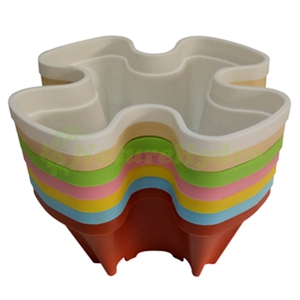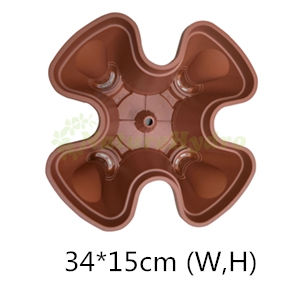Self-watering Pot System
A self-watering planter, also known as a self-watering container or a sub-irrigation planter, is a type of planter that has a built-in reservoir system to supply water to the plants as needed. These planters are designed to provide a consistent water supply, reducing the frequency of manual watering and helping to maintain optimal moisture levels for plant growth.
The planter is divided into two main sections—a planting area and a reservoir. The reservoir is located at the bottom of the planter and is designed to hold water.The self-watering planter typically has a fill tube or a watering hole through which you can add water to the reservoir. This allows you to easily replenish the water supply without disturbing the plants.
Fittings: Pots,Pot Covers,Reservoir,Pump,Timer,Netcups,Connectors.
1)Germination. Filled seedling plate with vermiculite, then putting seeds, watering the seeds, seeds will sprout in 3-7 days, other growing medium available are: perlite, rock wool, nutrient soil etc.
2)Transplant. Removing the plants from seedling plate to the pots when it grows to 10-15cm high, fill pot with clay pebbles, after all preparations are done, run the system.
3)Watering. Mixing water with nutrient in the reservoir, set timer as watering about 3 minutes, only need to water 4-6 times per day.
4)Harvest. For leafy greens, usually needs about 2 months to harvest from seedling, depends on the crops you plant, but what is more important is the joy you get from the growing process.
- Spread your drainage material across the base of the bottom tier.
- Fill the bottom tier with compost and position the 4 plants in the shaped sections.
- Attach the 2nd tiered section and repeat steps 4&5.
- Attach the 3rd tier section and repeat steps 4&5.
- Water thoroughly.






